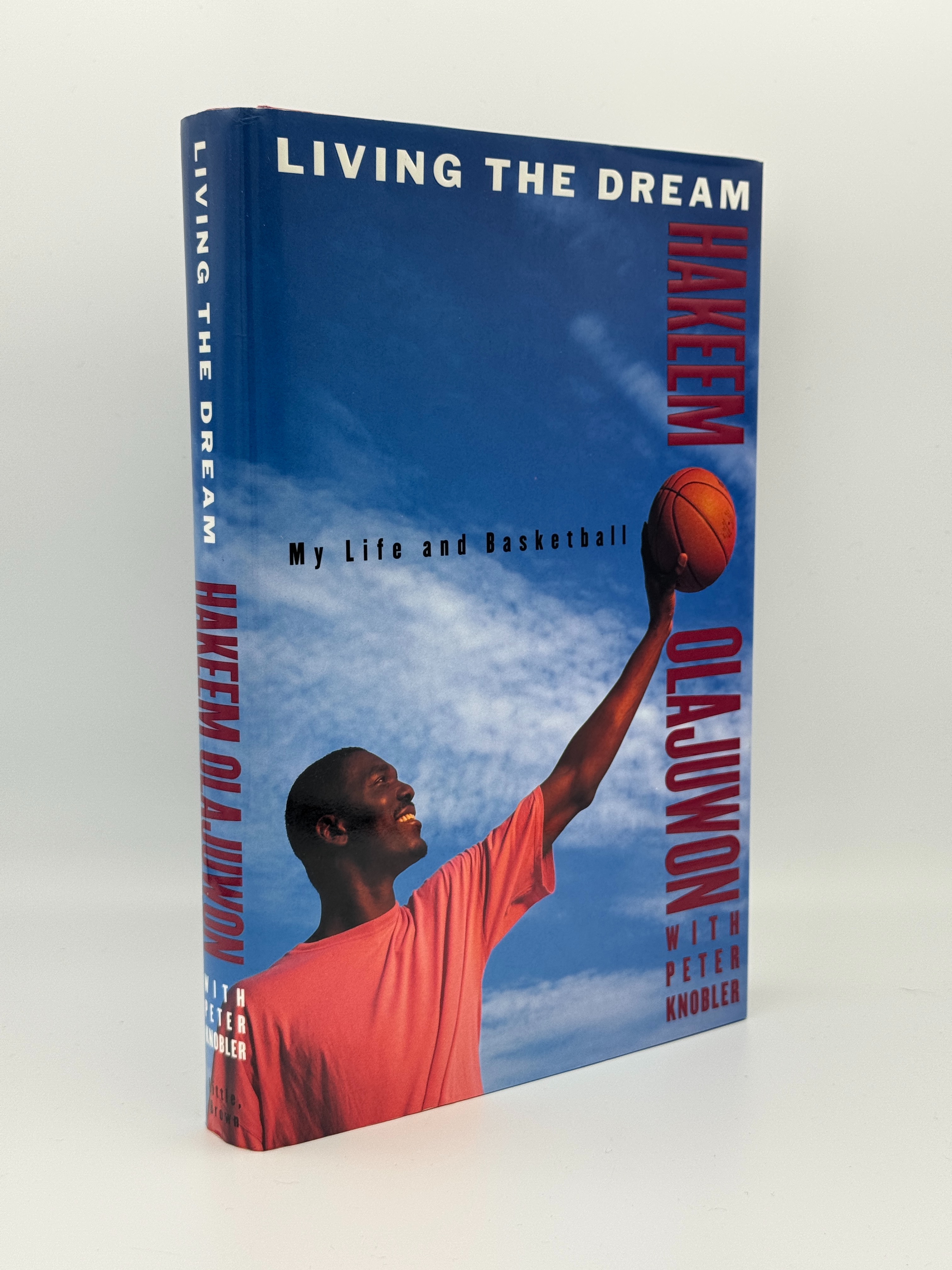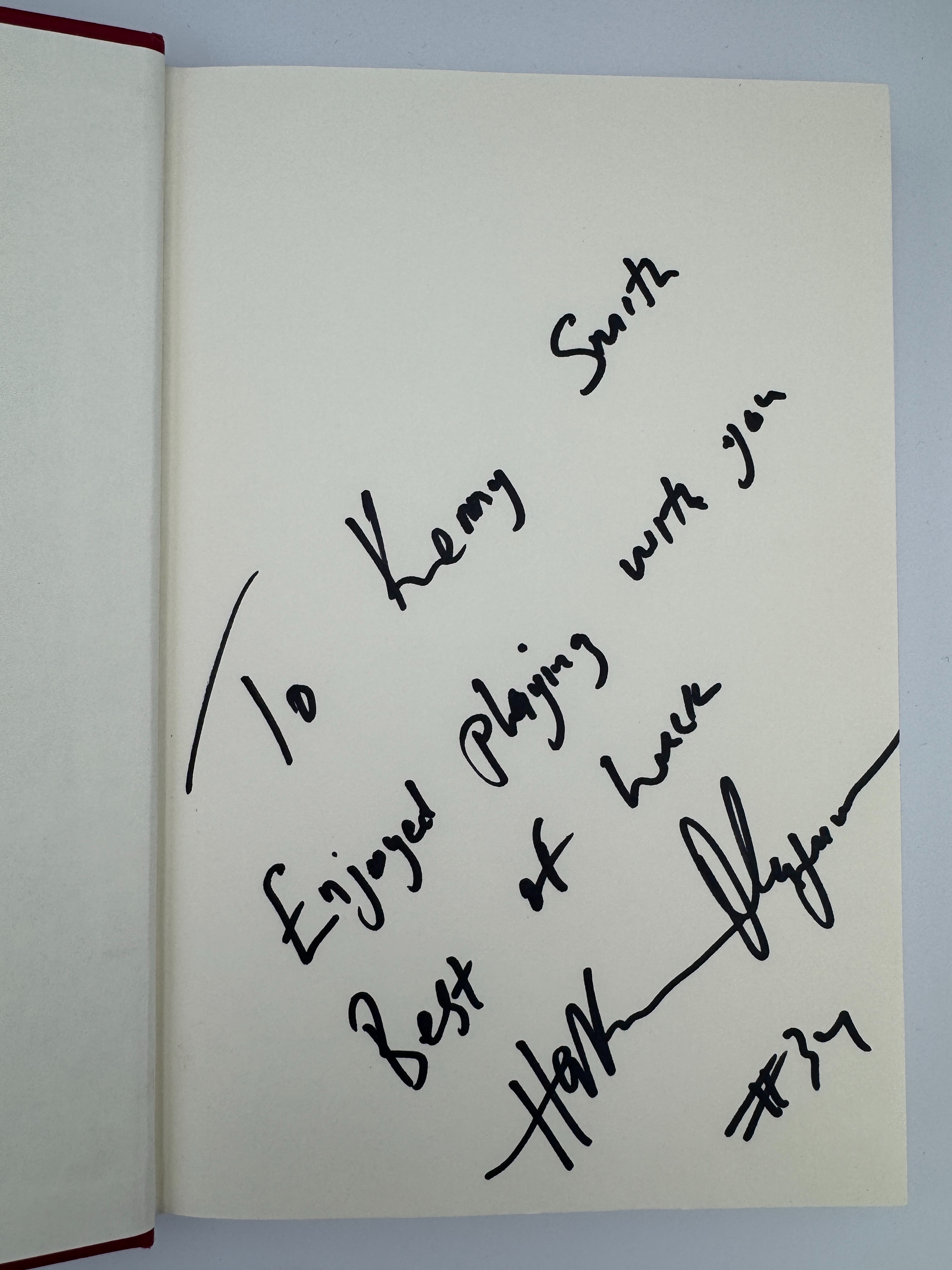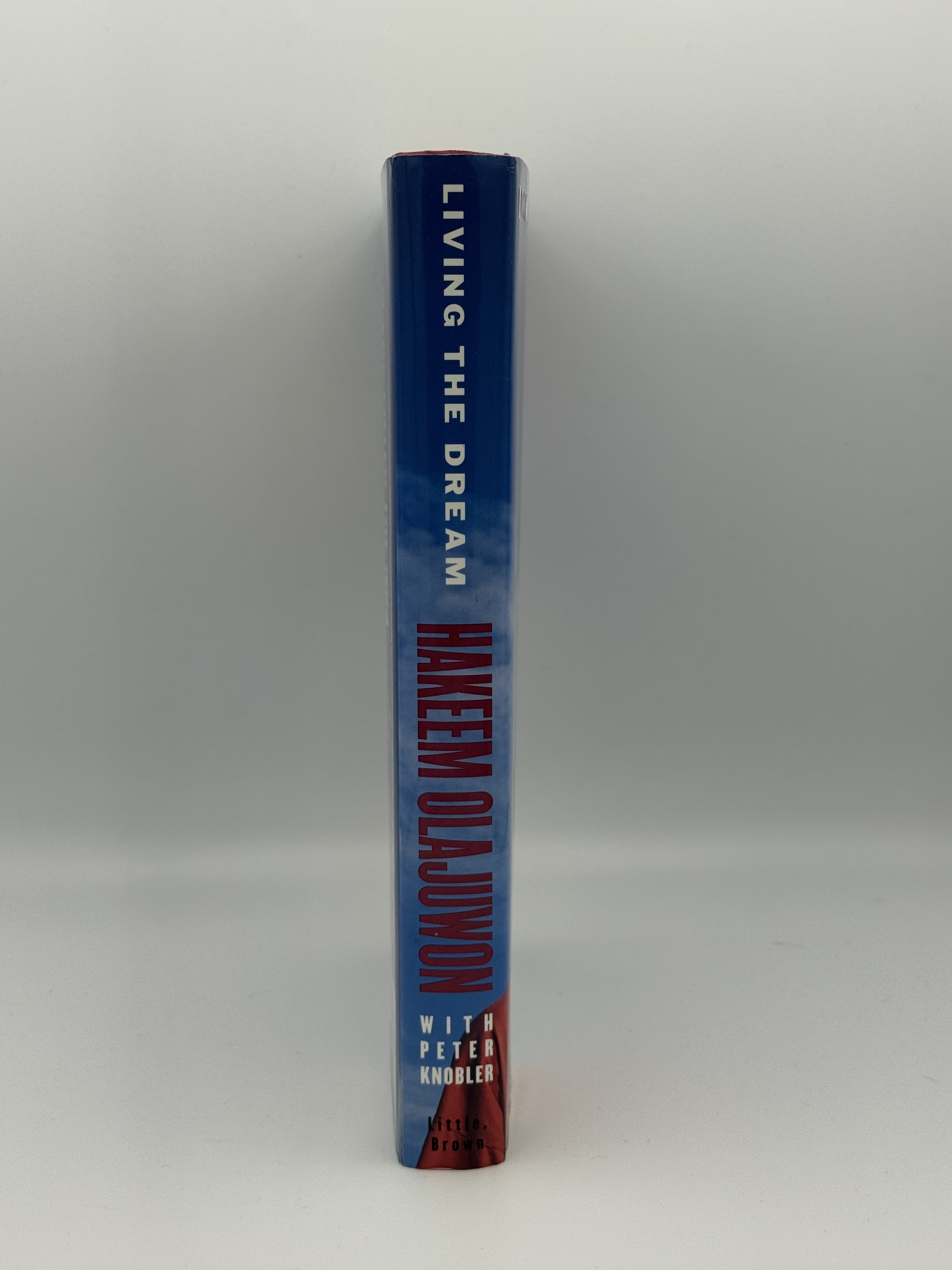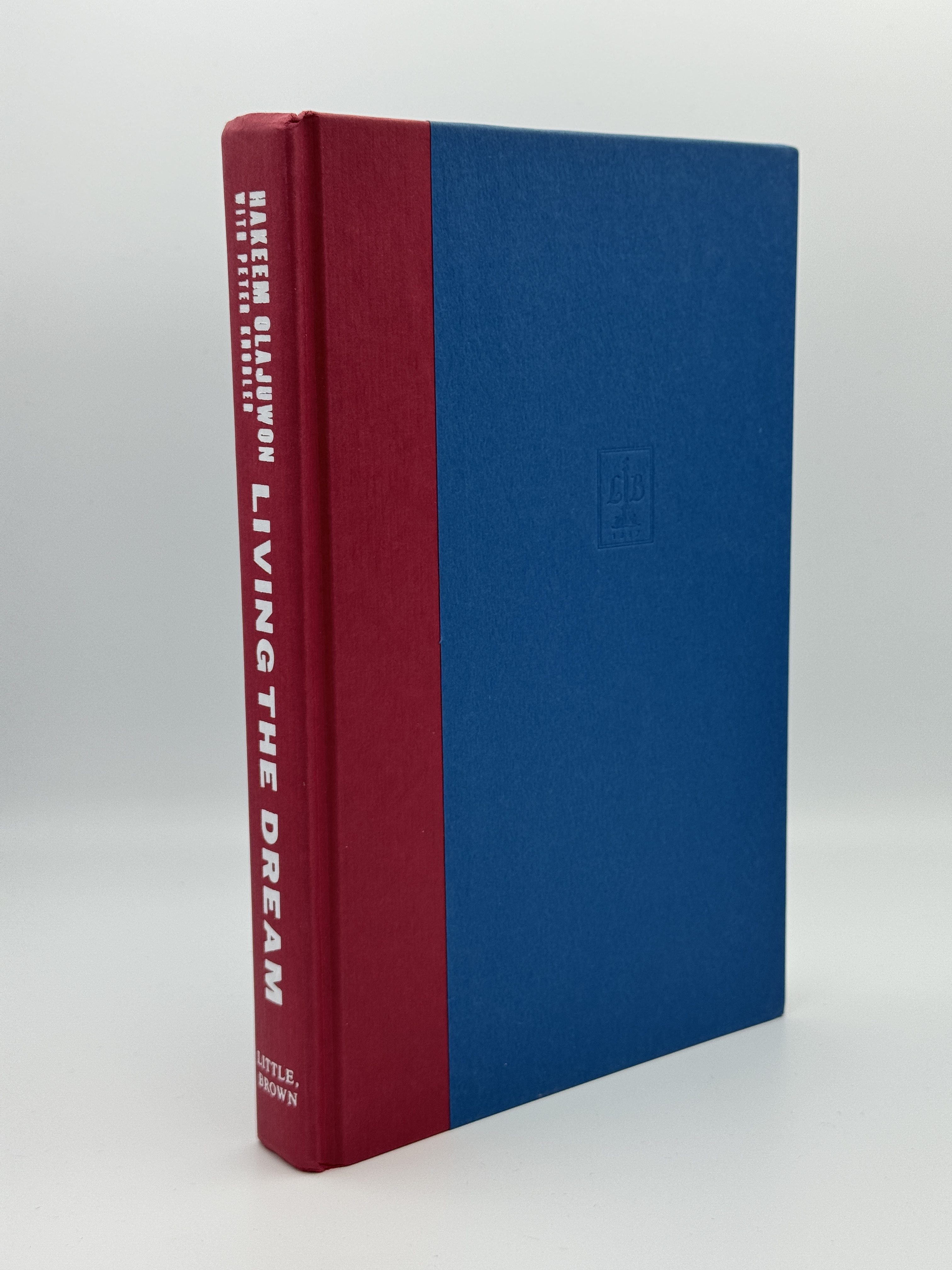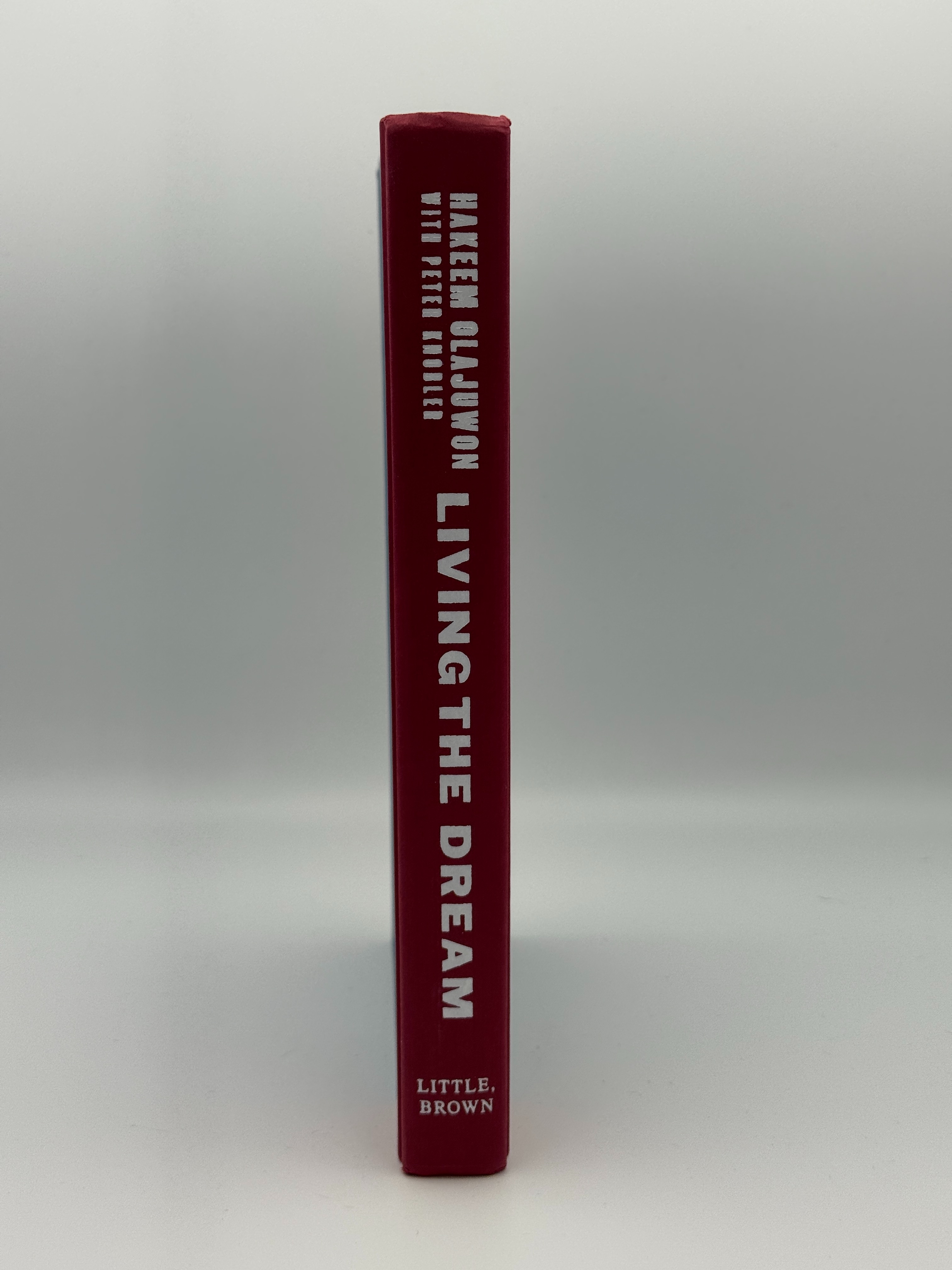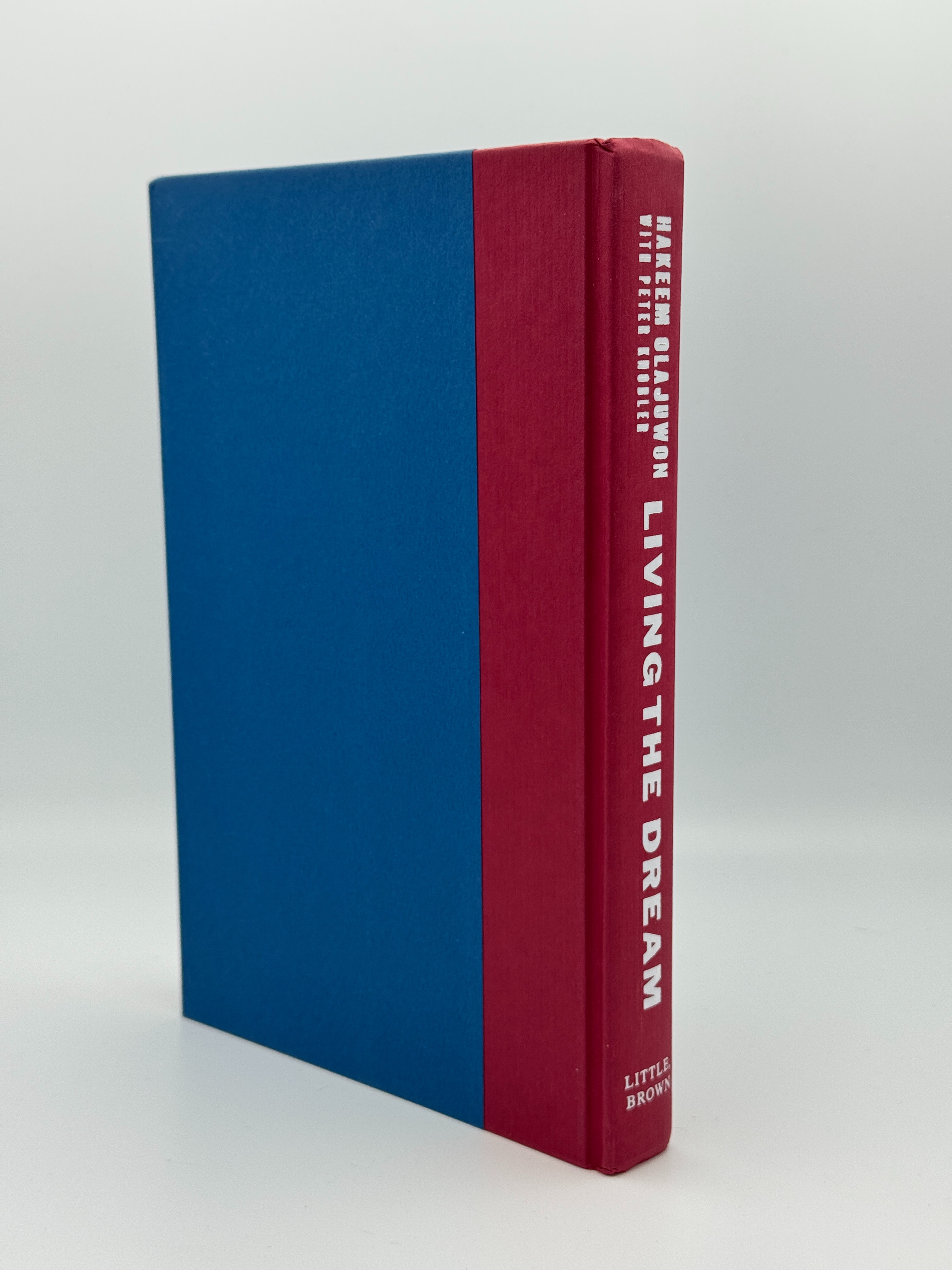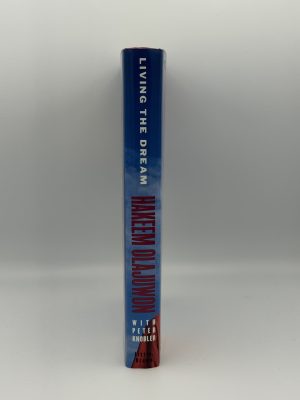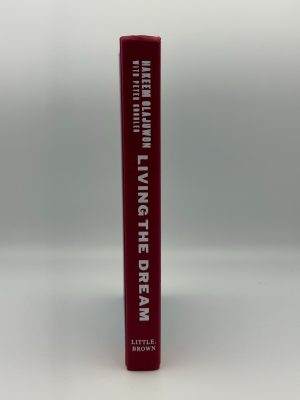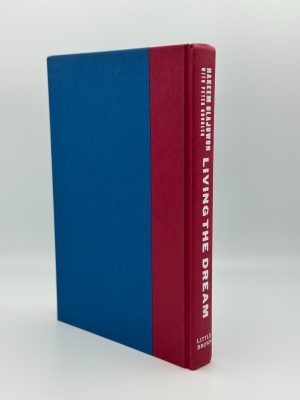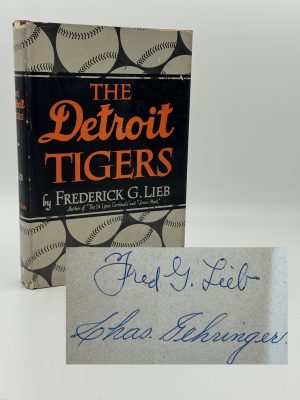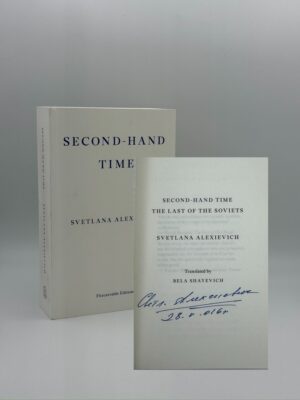
The Accidental Bookseller
Specializing in Uncommon Copies of Interesting Books
Membership(s): IOBA, FABA
Olajuwon, Hakeem
Living the Dream My Life and Basketball
$300.00
Olajuwon, Hakeem
Little, Brown & Co.: Boston, 1996. First edition.
Signed by Olajuwon and inscribed to his team mate Kenny Smith. Olajuwon and Smith played together on the back-to-back champion Houston Rockets. A stand out center, Olajuwon was a member of the 1994 US Dream Team, was selected as one of the 50 greatest players in NBA history and was named to the NBA 75th Anniversary Team.
Fine copy. Dust wrapper with one inch tear to bottom rear else fine.
The collaboration between Olajuwon and Smith began on a rocky note with tensions stemming from Smith giving his superstar teammate a bold warning soon after joining the Rockets:
“Akeem, if you ever scream at me like you have to other point guards, I will never throw you the ball,” Smith reportedly said.
Any teammate who said something like that to the legendary Olajuwon would likely have upset the reigning All-Star. But hearing it from a newly joined player was just too much. Frustrated, “The Dream” responded firmly, saying Smith would continue passing him the ball, no matter what.
However, “The Jet” stood his ground, replying with a firm “no.” While this might seem like an audacious move from the former 6’3″ playmaker, Smith actually had a strategic purpose. According to Miriam Fader’s book, he believed he needed to establish his credibility and “gain Olajuwon’s respect” early in their relationship.
If one trusts the reports about “The Dream” at the time, this actually seemed like the right approach. After all, the 1994 MVP had a reputation for being overly tough on point guards — a reputation that Kenny had also heard about — with many rumors circulating about Hakeem’s intense interactions with them.
Some stories describe him loudly “screaming” at point guards for mistakes, even demanding coaches “take them out on the spot.”Another account mentions a heated confrontation with teammate Vernon Maxwell.
Smith, in his mid-20s at the time, wanted to stop such behavior in its tracks, so he decided to make the team’s superstar aware of his boundaries early on.
Sometimes, for a relationship to truly break through, it first needs to hit a rough patch — and this perfectly describes the Olajuwon-Smith partnership. This is evident because, after their initial conflict, they went on to develop a strong bond.
It all began with Smith gradually making an effort to connect with the former Houston Cougar.
For instance, during bus rides, he noticed the seat next to Hakeem was always empty, so he started sitting there regularly to chat with the big man. One memorable trip, the two-time blocks leader shared a heartfelt moment, saying, ‘Kenny, you know you’re the first person that sits next to me and talks to me?'”
As a gesture of gratitude, Hakeem invited his new seat neighbor to break bread at his home. Smith accepted, brought his brother along, and the group enjoyed a fish dish prepared by “The Dream” himself. During that dinner, Hakeem shared his decision to recommit to Islam, and “The Jet” felt honored to be welcomed not only into his teammate’s home but also into his personal life. (Julian Eschenbach, Basketball Network, Jan 25 2025)
Related products
-
(Gehringer, Charles) Lieb, Fredrick G.
The Detroit Tigers
$400.00G. P. Putnam’s Sons: New York (1946). Presumed first edition (no other printings indicated). Part of the “Putnam Sports Series”. Signed by the author, a Hall of Fame sportswriter inducted into Cooperstown in 1973. Also signed by Charles (“Chas”) Gehringer, Hall of Fame Tigers second baseman from 1924 – 1942. A lifetime .320 hitter with over 2,800 hits, Gehringer was one of the best fielding second baseman in the history of the game. At the time of his retirement, he owned the MLB record for double plays turned by a second baseman and remains among the all-time MLB leaders in assists and putouts. Lieb spent nearly 70 years as a sportswriter and is credited with coining the term “The House that Ruth Built,” referring to the New York Yankees’ brand new stadium. Over his career, he covered every World Series game from 1911 to 1958, 30 All-Star games, and over 8,000 major-league baseball games. Newsprint offset front pastedown and free end paper, little toning to rear free end paper, unobtrusive mark to front board, otherwise a bright, fresh and nearly fine copy in very good dust wrapper, corners clipped, slightly chipped at spine ends, rubbed along sides spine. less
moreOffered for Sale by: The Accidental Bookseller -
Peterkin, Julia
Black April
$800.00Bobbs Merrill: Indianapolis, 1927. First edition, first issue with ‘ducks quacked’ on page 17 (Ahearn Collected Books). “An extraordinary novel of Negro life on an isolated plantation” signed by the author on front free endpaper. Black April was “accepted by the critics as being one of the best books ever written about the southern negro” (The Sunday Oregonian). A very good copy, gilt on spine and front cover dulled as usual in very good, first issue dust wrapper without Crawford blurb, price intact, extremities of spine a little chipped, one small edge tear to rear. Peterkin went on to win the Pulitzer Prize in 1929, the first southern novelist to receive that honor. A household name for the better part of three decades, “Peterkin’s accomplishment lay in her upending the traditional plantation novel by replacing its gross stereotypes with rural black southerners of complexity, stamina, integrity, and courage, while valorizing the African spiritual inheritance as a transcendent force of cultural regeneration. Because no Uncle Toms, Aunt Jemimas or Colonels clad in white linen inhabited Peterkin’s fiction (indeed, white characters made rare appearances), and because she dared depict tender love and sex between black people, prickly white southerners viewed her suspiciously, perceiving her work as inflammatory and pornographic. In a letter to her mentor H.L. Mencken, Peterkin admitted the sting of her own family’s disdain. Her grown son, she relayed, urged her to write about ‘beautiful white men and women, not n-words.’ In a poignant confession of her alienation she tersely wrote, ‘No beautiful white people live in my head.'” (Life out of Darkness: The Recovery of Julia Peterkin, Forgotten Pulitzer Prize Winner by Elizabeth Robeson, M.Phil, Columbia University). less
moreOffered for Sale by: The Accidental Bookseller -
Alexievich, Svetlana
Second-Hand Time. The Last of the Soviets
$800.00London: Fitzcarraldo Editions, 2016. First UK edition. A paperbound original. Signed to the title page by the author, the winner of the 2015 Nobel Prize in Literature, and dated in the latinate style as is her wont. Not to be confused with the 2024 Fitzcarraldo edition, limited to 1000 copies signed on a bookplate. Few small finger smudges, else fine in wrappers. less
moreOffered for Sale by: The Accidental Bookseller -
Duncan, Robert
A Selection of 65 Drawings from one drawing book 1952-1956
$400.00Black Sparrow Press: Los Angeles, 1970. 65 loose prints, not bound (as issued). A signed presentation copy from Duncan to Diane di Prima and her second husband Grant (Fisher), with a full page original drawing on card stock, measuring 6″ X 9″, in the style of drawings from the book. The Black Sparrow Press item appeared with a publisher’s chemise and signed colophon page — these are not present here and presumably weren’t included in the author’s copies of the book. A few minor age spots to card stock, otherwise fine. When speaking of the impact of Duncan’s teachings, di Prima cited the lesson that poetry intensifies life. In an interview with fellow Beat poet David Meltzer, she recalled, “Robert was probably one of the closest, most intimate lovers I ever had, even though we never had a physical relationship. I learned a lot of different kinds of things from him. One of the things I learned—in a way no teacher of Buddhism ever showed me—was how precious my life was. How precious the whole ambience of the time. A real sense of appreciating every minute.” di Prima recalled their personal relationship in an August 2001 interview with poet David Hadbawnik: “Robert used to come and hang for days, he’d move into my house in Marshall in the ’70s, and bring his French mysteries that he was teaching himself idiomatic French from, and his notebook, and he’d stay for days. And he always came to Christmases with the kids, because Jess doesn’t like holidays, and so I’d have to say mid-’70s, through ’75 on, he was there many weekends, many mornings…. Eating fried herring from the bay for breakfast.” less
moreOffered for Sale by: The Accidental Bookseller

 USD
USD GBP
GBP EUR
EUR CAD
CAD AUD
AUD ZAR
ZAR
